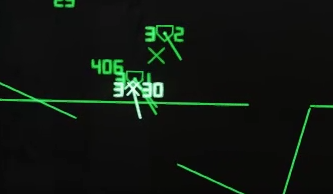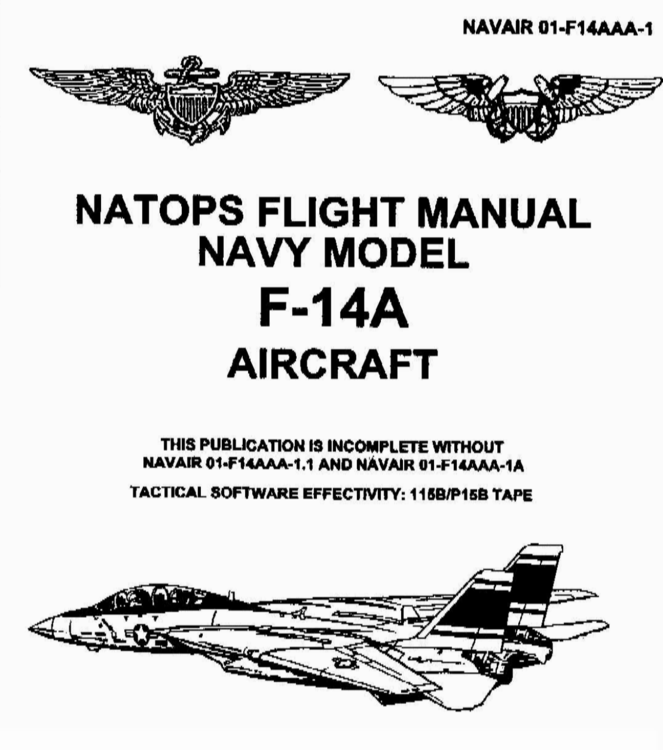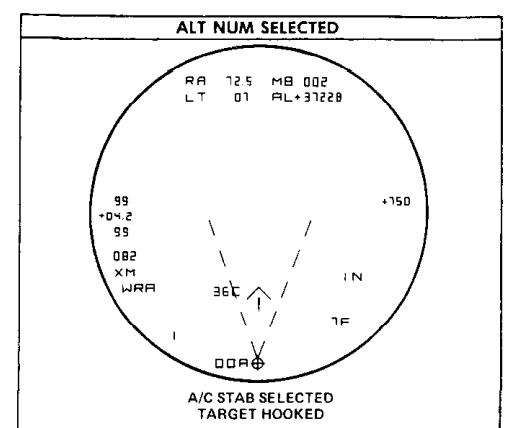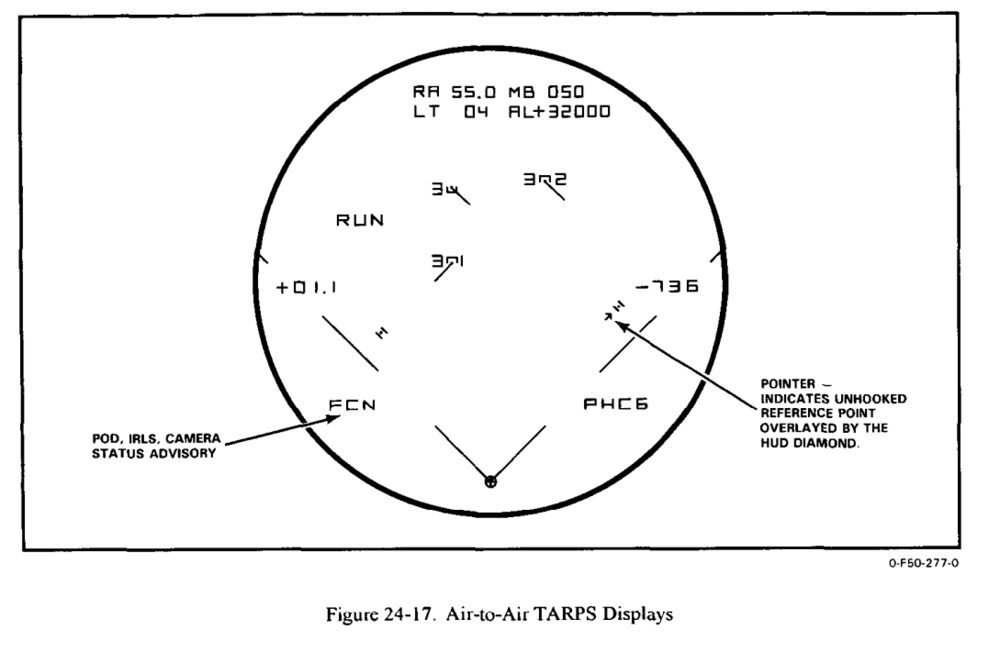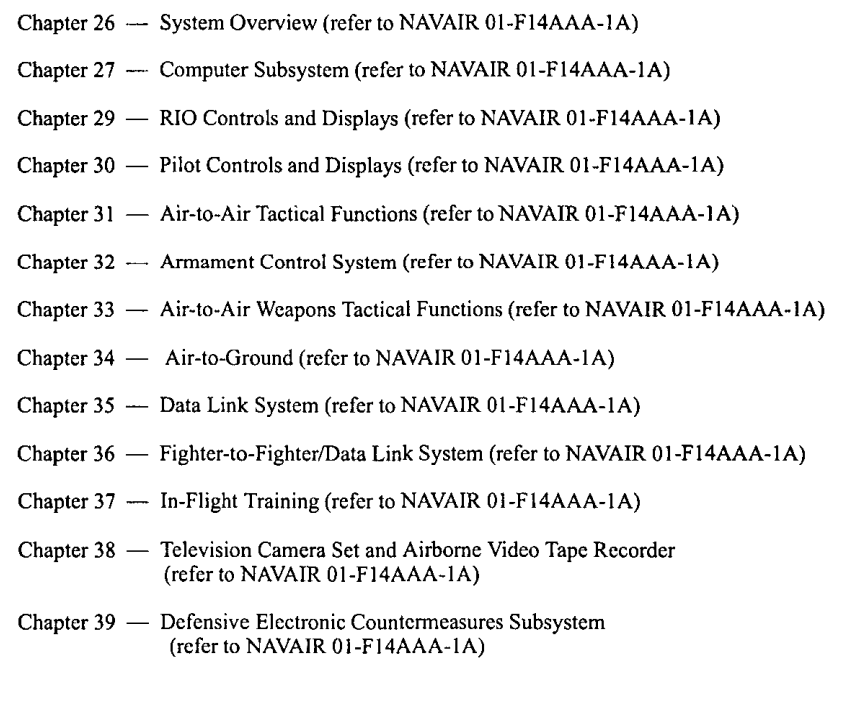

near_blind
ED Closed Beta Testers Team-
Posts
1088 -
Joined
-
Last visited
Content Type
Profiles
Forums
Events
Everything posted by near_blind
-
Thanks for the effort! So far checking the good old DTIC the "hottest" confirmed Tomcat shot I can find evidence of was that famous 110 mile Phoenix shot, which was from a M1.5 Tomcat against a M1.5 drone. Assuming they were both head on, that closure rate falls at or just below the 1800 limit. Reading through some early 70's vintage money requests capability reports, the anti ASCM language is certainly there, but it's more aspirational and less determinant than I remember. All this to say I still find the situation odd, but the AWG-9 was a system full of oddity. I can live with it. For comparison, talking with a buddy who does Eagle stuff the contemporary, original APG-63 had a gate of 2100 knots.
-
That's all I can ask. I appreciate it!
-
Hey, I appreciate the response @IronMike. My own math career peaked at Calc II so I'm not going to be the one to critique . I'm just a little perplexed is all. By every account I've read, the F-14 was designed to go fast, and to kill things that were going fast, be that ASCMs, highspeed bombers or fighters. 1800 knots as a hard limit is approaching speeds you could expect from a particularly hot commit versus another fighter or a backfire, much less something like a Foxbat. That sort of speed places serious hinderances on engaging the previous generation of ASCM and SSCMs, much less the AS-4 and AS-6 that the aircraft was purported to be a counter for. Solving the closure issue by cranking seems alright on paper, but contextually also seems odd. I've read on here before that cranking to reduce closer defensively simply wasn't a tactic employed during the 70s and portions of the 80s. As an interceptor, reducing closure allows the threat to approach closer to the carrier, and reduces the effective range of your weapons allowing them to approach closer still. Increasing off set against a very fast threat like a ASCM would also reduce the missile's PK by introducing another dimension your missile has to correct for, still further reducing range. Crew material I have read specific to the Tomcat emphasized preparations to shoot by getting high, and then fast, I don't recall any talk of having to massage geometry to maintain closure rates (besides considerations for the notch). I'm not trying to be combative, and I hate trying to fight lines in manuals with what is anecdotal assertion at best, but manuals can be misinterpreted and given the role and pedigree of the aircraft, this seems like an strange design decision, if on no one else but Hugh's part. Why would the DDD have a switch to display closure of up to 4000 knots if the system can only effectively use half of that? Have you guys discussed this with your RIO SMEs?
-
So using the AS-4 scenario above, if the missile is cruising at ~2000 knots GS, the Tomcat should be able to see it so long as aspect is in NOSE and the aircraft has a GS of greater than ~200 knots? Doing some quick tests, from the RIO seat of an aircraft travelling 450 knots and again at 550 knots with the aspect set to NOSE, the radar was unable to pick up targets with a closure of 2000 knots in PD modes. I was able to confirm the targets were within the scan volume and had detectable RCS by finding them in pulse search. If the gate is centered around the aircraft's own speed, I would expect the gate to be able to acquire targets up to 2250 or 2350 knots GS.
-

Feedback Thread - F14 Tomcat Patch 16-06-2021
near_blind replied to IronMike's topic in DCS: F-14A & B
Y'all got any of them Sparrow fixes planned for the next update? -
Everything Draconus said . Let's try something else. Here's a video of an extremely simple TWS Phoenix shot. To start: the basics. We're in air to air master mode, our missiles are prepped (light is on and the status bar is white with a checkered flag over the selected missile). ACM guard is down, as draconus mentioned, the ACM guard is a shortcut to configure the aircraft for a dogfight, and in a dogfight you don't want 1,000lbs of Phoenix weighing you down, or so the thinking went. Flipping that up makes it so the phoenix completely ignores your radar, and flies straight off the aircraft with its radar active. That's a no-no unless you absolutely need it. Jester starts off the engagement in RWS. At 11 seconds you can see my target, an Su-30 at 100 miles, appear on the screen, and we select a phoenix and flip the master arm. At 1:04, the target has approached close enough that Jester makes his switch to TWS. As discussed, you can tell by the narrowing of the scan area, and the appearance of a velocity vector on the TID. Other things to note: You notice an inverted T on the VDI and the HUD. This is your steering cue, you center this to achieve what the computer things is optimal lead for a missile shot. You do not get a HUD target indicator diamond in TWS like you would in STT. Another thing to note is the line on the left hand side of the VDI. This is your dynamic launch zone. The horizontal line to the left of the vertical line is the current range to first track to be fired upon. The top horizontal bar on the right side of the bar is the RMax, or maximum range the weapons system thinks the AIM-54 can hit a target at. The system is pretty dumb, and you should take this range with a healthy grain of salt. The lower right hand bar is RMin, or the minimum range the missile can expect to maneuver and hit a target. You will have generally gotten rid of your Phoenixes by then. Also note on the TID the altitude indicator on the left hand side of the target track (he's at 33,000 feet, so the altitude indicator is 3, indicating he is between 25,000 and 35,000, and the shoot number on the right hand side of the track. When the target track starts flashing, with no missile in the air this indicates the target is within RMax. At this point the HOT TRIG light on the ACM panel is also illuminated, but the sun is bright enough it's hard to discern. We can shoot at any time. I had my audio muted because of work, but there will be no jester audio for locks, hard or soft. TWS doesn't lock things. TWS tracks things. STT locks things, and we're not doing that right now. At 1:58 we shoot. The weapons count decrements, the shoot number on the right of the track transitions to the TTI timer, and we lose the DLZ because there is no other track to shoot upon, and the AWG-9 will only guide a single AIM-54 to any track in TWS. Now all we need to do is keep the target in between the lines. At 2:18 we start a slight turn just to illustrate that TWS auto will slew the radar to keep the scan centered on the track as best it can. At 3:35 the TTI counter begins flashing. This is our cue that the AWG-9 has sent the active signal to the missile, the missile is now using it's own radar, and theoretically we can turn around and run away at this juncture. We won't, this is an unarmed Su-30, but it is an option. At 3:56 the TTI counter reaches 0, and at 4:00 we can visually confirm the missile hits the target. The TTI counter is just an estimate, so there will generally be some discrepancy between when it hits zero, and when the missile actually reaches the target. The more the target maneuvers, the greater the discrepancy will be. At 4:11 the radar considers the missile timed out, but since we're still tracking enough of the wreckage, the radar reinserts it into the shoot queue, and we could theoretically kill it some more. (also note the return of the DLZ on the VDI).
-
TWS doesn't 'lock' things, so waiting for one is counter productive. Jester searches with a +/-40 degree 8 bar scan on a 100 mile scope. Generally speaking if he finds something with ~80 miles, he will automatically switch to a +/-20 degree 4 bar TWS-Auto scan. Your cue that this has occurred is that on the TID the search cone will shrink from 80 degrees to 40 degrees, and any detected contacts will gain a velocity vector. A thing to keep in mind is when he does this, he keeps the scan centered, so if the contact was >20 degrees from your own heading, you might need to maneuver slightly to put the contact back in the scan volume. In TWS with any weapon by the AIM-54 selected, you'll get a velocity vector, and a number on the left of the track that is representative of their altitude in 10,000 foot increments starting at -5000 feet (the manual explains this). With AIM-54 selected, the radar will start evaluating contacts and assigning a shot order, which will appear as a number to the right of the track. Your first missile will go to the track with a 1 to the right of it, the second to the one with a 2, so on so forth for the number of Phoenixes you have on board. When you see that number, and the missile is in range, you should see HOT TRIGGER illuminate on your ACM panel, at this point you're good to shoot. Once the AIM-54 leaves the rail the number on the left will change from the altitude block to a estimated Time To Impact TTI. You need to keep the track within view of the radar until the missile goes active, signaled by the number flashing, which depending upon a couple of factors will happen sometime around TTI=30 or less. Jester uses TWS-Auto by default, but once you fire the radar will be forced into TWS-Auto regardless, which should slew the radar to keep the track within the scan volume, affording you a limited ability to maneuver (though also keep in mind aggressive maneuver will affect the radar's ability to hold the track). Things to keep in mind is that the AWG-9 is specifically designed that you can only shoot a single missile at any track in TWS. The AWG-9 is also rather old, and is liable to lose track of the target if the target maneuvers aggressively or enters the doppler notch. This has occurred when an 'X' appears over your track, when this occurs the radar will continue to guess the position of the target based on last known information until it finds the target again, or more likely the track is timed out or 'forgotten' by the radar. If you don't have a missile in the air, this will happen after 8 seconds. If you do have a missile in the air, this will occur after 180 seconds or after TTI, whichever occurs first. The Phoenix can also be shot in STT, in which case it's behavior is determined by which mode of STT you are using. If using PDSTT, the Phoenix acts like a giant SARH missile such as the Sparrow, R-27 or 530D. You will need to keep the target locked for the entire duration of the missile's flight. If using PSTT, the radar is unable to guide the missile, and will give it pre-launch steering instructions at which point the missile will immediately go active after launch and is effectively on its own. STT can be entered either from TWS or RWS. Jester will by default use PDSTT, but you can ask him to switch to PSTT. Sparrows can be shot in either PDSTT or STT, it behaves the same in both cases.
-
http://www.heatblur.se/F-14Manual/general.html#an-awg-9-radar
-
I don't know what to tell you. I did two bounces last night and was able to engage the ACLS for both of them. I didn't touch the Link, and all I did to the autopilot was flick master mode off after touching down, and re-engage it and acl behind the boat.
-
The F-14 has two different landing instrumentation modes. ACLS and ICLS. ACLS is for steering the aircraft to zone of air space where the automatic landing system can sync up with the carrier and fly towards the deck. ICLS is a separate system that is purely for providing guidance to the boat. They provide similar, but not identical steering cues. ACLS is provided via LInk 4A when the carrier is selected via host. ICLS is provided by a separated system over a channel that is broadcast by the carrier and selected by the pilot. The Tomcat has two modes of Link 4, Link-4A (or tactical as it's labelled) and Link-4C (fighter to fighter). There is no third or "non tactical mode". By default the aircraft will be in 4A, you don't need to tell jester to go to tactical mode unless you're already in fighter to fighter. 4A is a single provider system, you can only be tuned to one host at a time, and if you want ACLS that has to be the carrier you want to land on. As for being unable to re-link with the ship, I tried today and was unable to reproduce it. I was able to switch to an awacs, switch to fighter to fighter, switch back to the boat, get steering, do a touch and go, and land with steering still there.
-

No F-14 changes in the 2.7.1.6430 OpenBeta update?
near_blind replied to Thundercat710's topic in DCS: F-14A & B
I keep writing Northrup Grumman about fixing this LAU-92 business, I think they're screening my emails... -

No F-14 changes in the 2.7.1.6430 OpenBeta update?
near_blind replied to Thundercat710's topic in DCS: F-14A & B
There are four Sparrows defined in ED's code, formerly in the database folder, now in where ever ED put their binarized library, these are used by the F/A-18, F-15, and the AI. There are another three Sparrows defined in the F-14 Coremods folder used exclusively by the F-14 that exist for reasons having to do with model sizing and pylon adapters. These are meant to be carbon copies of the ED ones, but on occasion they get out of sync due to what I assume are inter-team patch logistics. Perusing through Quaggles datamine it looks like that happened again. Confusing things further, the missile API changes are also happening at a level deeper than values defined in the lua, and I don't know if their scope effects all missiles defined as sparrows, or only the ED ones. Weird things have happened in this space in the past. Hence the original questions. -

No F-14 changes in the 2.7.1.6430 OpenBeta update?
near_blind replied to Thundercat710's topic in DCS: F-14A & B
Any chance those sparrow changes ED listed also effect the HB Sparrows? -

AI instantly reacts to ARH missile launch
near_blind replied to Arctic Fox's topic in Aircraft AI Bugs (Non-Combined Arms)
This behavior is still present in 2.7.1 despite this entry in the change log: Aircraft AI. In the case when an active missile is launched in the TWS mode, AI aircraft will begin evasive maneuver only after the missile seeker is turned active. ~70 mile AIM-54 launch in TWS from F-14, AI Reacts instantly and begins dropping CM ~30 mile AIM-120 in TWS from F-15, AI reacts instantly, begins dropping CM MiGs Chaffing 30m.trk MiGs Chaffing 70m.trk -
SARH missiles in general have pretty generous conditions for reacquiring a lock right now (assuming they haven't been chaffed). The R-27ER might have some IRL features that also make it more capable in this regard. I was fooling around happened to witness an example the RWR behavior I was trying to describe Tacview-20210516-154051-DCS.zip.acmi In this I lose the lock warning when I over-rotate after my second shot, and I'm assuming occlude multiple antennae. The RWR seems to pick up the Fulcrum once I roll back out (I get a new contact tone and when I briefly glance at the RWR it shows a 29 emitter ahead), but I never get the lock tone again. The MiG-29 was never nose cold, and was locking me the entire way (as evidenced by the Alamo I end up eating). Like I said, I'm not sure if this is intended behavior or a bug. Maybe @IronMikecould chime in when he gets a chance.
-
Bottom most track is the original track for a contact that has been lost and is being extrapolated, and has a missile that's currently 30 seconds until TTI. Track above it is the same contact that has been reacquired by the radar, but is too far away to be correlated onto the existing track, and thus has been assigned a new track.
-
Looks like the Flanker detects your launch via AI Space Magic, goes defensive, and then decides to turn back hot. I imagine at this point it has locked on to you again and is supporting the missile. I have noticed that if an airborne emitter disappears from your RWR, either because they turned away or because you maneuvered in such a way to occlude one of the receivers, it takes some time for the RWR to generate the shot warning, if it does it at all. I don't know if this is a feature of the RWR, or a bug. I hope it's a bug.
-
Can confirm. Iron Mike acknowledged it back in December as well. Hopefully it gets addressed at some point.
-
That'll do it.
-
If they don't have the TTI counter next to them they're not the tracks the AWG-9 was guiding the missiles to, and those missiles are lost. If they still have the TTI Counter and they're X'd out, then they're being extrapolated and the missiles will still guide to the estimated position before going active.
-
If there's no wind, then a slanted BFL is indicative that your alignment has somehow gotten messed up, or you've damaged the INS. When are you giving Jester the command to enter steer points? Telling Jester to enter multiple waypoints before he's finished entering the first can cause him to get confused and mistakenly enter them as ownship pos. I don't remember if this is still possible after alignment, but best practice is to give jester one waypoint at a time. How many Gs are you putting on the jet on your way to the target? Grossly Over Ging the jet can damage your INS.
-

reported F-14 Supercarrier compatibility
near_blind replied to Reflected's topic in Bugs and Problems
Well by that logic, every issue that exists for the F-14 also exists for the A-4. It's an issue of ED failing to account for other aircraft rather than an issue with the aircraft themselves. -
Honestly not really. The issue is besides TARPS, NAVGRID and some stuff on BIT and OBC, the -1 doesn't cover RIO controls or systems, those are almost entirely contained within the -1A.
-
It's hard to see if you don't know what you're looking for, but both knobs have a physical indentation to indicate what position they're in.
-
The carrier is a giant ferro-magnetic object, and will disrupt compasses when you are near it.



